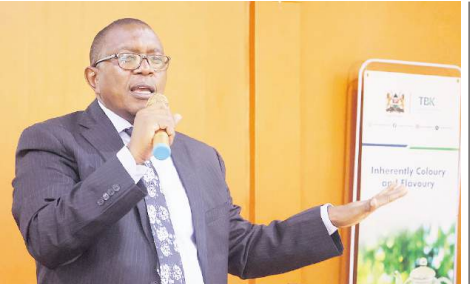

The government is studying a draft policy framework to correct longstanding inefficiencies in Kenya’s agricultural financing and subsidy programmes.
It proposes registration of 1.4 million poor farmers countrywide, aimed at ensuring targeted and efficient input distribution.
The framework, once adopted, will provide a structured approach to sustainable financing, improve coordination across levels of government and better support millions of farmers who rely on agriculture for their livelihoods.
Agriculture Secretary Collins Marangu at the State Department for Agriculture said more than 70 per cent of rural communities depend on agriculture and 75 per cent of all Kenyan livelihoods are agriculture-based.
“Despite this enormous contribution, we continue to face significant challenges, especially in accessing sustainable financing and implementing subsidy programmes efficiently,” he said.
Marangu said the country lacks a well-crafted regulation to manage ongoing subsidy programmes. This gap, he said, undermines efforts to increase productivity, enhance food security and uplift rural economies.
He spoke on Thursday during the national validation workshop on sustainable financing and subsidy management in agriculture.
“While several subsidy programmes have been running, the absence of a coherent policy framework has led to duplication, poor coordination and sometimes conflicts of interest,” he said.
According to the draft policy framework, agricultural subsidies are vital in incentivising adoption of new technologies, boosting productivity, enhancing food access, reducing poverty and stimulating economic growth.
Past subsidy interventions include the National Accelerated Agricultural Input Access Programme, Kenya Cereal Enhancement Programme-Climate Resilient Agricultural Livelihoods, National Value Chain Support Programme, the National Fertiliser Subsidy Programme and county-level fertiliser subsidy initiatives.
Marangu said the policy framework proposes mechanisms for monetary and financial support for subsidy programmes.
The ultimate government goal, he said, is to transition Kenya from a subsistence-based agricultural system to a modern, innovative and commercially competitive sector.
“This can only happen when farmers can effectively access financing,” he said.
The policy outlines pillars, including promoting inclusive financing mechanisms such as incubator platforms and insurance products, as well as strengthening coordination between the national and county governments. It calls for private sector participation and institutional reforms to boost governance and accountability.
Marangu said one critical aspect of the framework is the planned registration of about 1.4 million high-needs farming households to ensure targeted and efficient input distribution.
“By supporting these households, we promote equity and sustainability within government support programmes, contributing to broader economic stability,” he said.
Peter Owoko, head of policy in the Agriculture department, clarified that while the framework is not a law, it aims to align budgeting processes with subsidy provision to improve impact.
Misalignment between budgets and subsidy implementation previously has made these programmes less efficient and impactful, he said.
This gap was identified in the Agriculture Sector Transformation and Growth Strategy (2019-29), which called for a complete restructuring of the subsidy system.
Owoko said aligning budgeting and subsidies would ensure more focused and meaningful support. He cited examples such as bundling input subsidies with insurance for the same farmer to enhance effectiveness. Marketing and subsidy strategies also need to be aligned to create more impactful outcomes.
To improve delivery and transparency, Owoko said the government is increasingly adopting digital solutions.
“Digitalisation will allow us to better reach farmers and manage the programme more efficiently,” he said.














